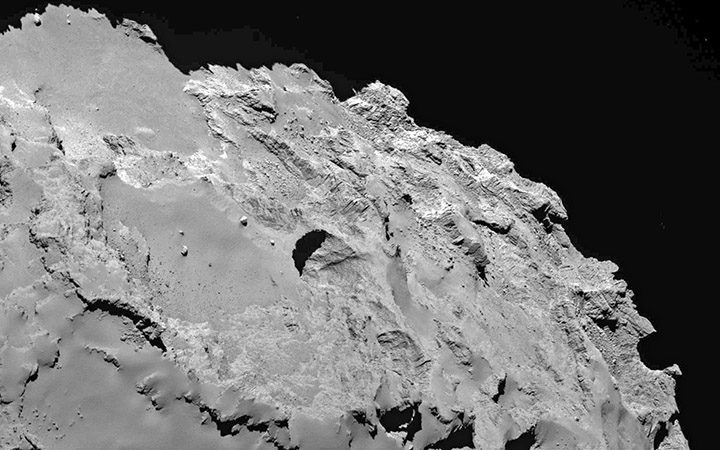NEW YORK – Comets are basically dirty snowballs, but it turns out they can have a very Earth-like feature: sinkholes.

That’s what scientists think after analyzing data from a comet observed by the European Space Agency’s Rosetta spacecraft. The researchers suggest that 18 large holes on its surface are sinkholes, created by the collapse of its surface into a porous interior.
READ MORE: Chaotic dance of moons around Pluto; ‘Kind of like you’d see at a Grateful Dead concert’
Some pits are hundreds of yards deep, which gives glimpses of the comet’s interior. In some cases, the pits were seen spewing jets of gas and dust, as the sun’s warmth turned the ice inside them into a gaseous form.
Other comets have pits too, but they don’t look like the apparent sinkholes on comet 67P/Churyumov-Gerasimenko.
The new observations and analysis were released Wednesday by the journal Nature.
- 2021 heat dome fuelled by climate change, intensified wildfire risk: study
- B.C. introduces legislation recognizing Haida Gwaii Indigenous title
- Whale experts confident B.C. orca calf will survive, find family if rescue plan succeeds
- Plastic production cap still contentious as Ottawa set to host treaty talks



Comments